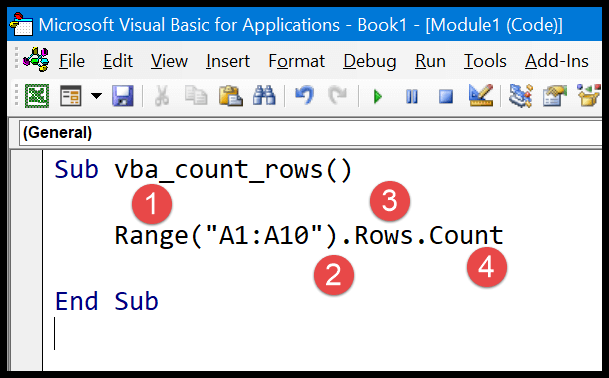Closing a sale effectively is a critical skill for any sales professional. It’s the point at which all the rapport building, need identification, and presentation of benefits culminate in the transition from proposal to profit. While some might argue that a sale is simply a transaction, seasoned salespeople understand that it’s an art. A successful close isn’t just about making a deal; it’s about facilitating a decision that benefits both the customer and the seller in a way that feels natural and positive.
The landscape of sales closing techniques is diverse, and what works best can vary widely depending on the situation, the product, and the customer. Some salespeople might lean on the classic assumptive closing technique, which operates under the belief that a sale will happen and uses language that subtly nudges the customer towards that conclusion. Others adopt more contemporary strategies that involve creating urgency or leveraging psychological triggers like the fear of missing out. No matter the method, the best way to close a sale is always about meeting the customer’s needs and making them feel confident in their purchasing decision.
Understanding the Sales Process
Grasping the sales process is crucial; it’s about identifying who might want your service or product, ensuring they’re likely to buy, presenting your offer attractively, and handling any reservations effectively.
Identifying Your Prospects
In the sales cycle, identifying prospects is the initial step. A prospect is anyone who fits the demographic of a potential customer but hasn’t yet shown interest. One can find prospects through various channels like social media, networking events, or referrals.
Qualifying Leads
Once prospects are identified, the next task is to qualify them as leads. A qualified lead means a prospect that has been vetted and confirmed to have the interest, authority, and financial capacity to purchase. Qualifying questions and assessment criteria are tools to distill prospects into serious leads, refining them through the sales funnel.
Delivering the Perfect Pitch
When a prospect becomes a qualified lead, they move closer to a sale, and this is when delivering the pitch comes into play. The salesperson conveys the value proposition clearly and shows how their offering solves the lead’s problem or meets their needs. The pitch should be custom-tailored based on insights gathered during the qualification stage.
Navigating Objections
Even the most interested potential buyers may have objections or reservations. A key part of the sales process is to anticipate these objections and prepare responses. Sales professionals must listen actively, validate the prospect’s concerns, and address them with factual information that aligns with the client’s goals and pain points.
Building Relationships with Potential Customers
In sales, the ability to build strong relationships with customers is often the deciding factor for success. This section will delve into how trust, rapport, and empathy play a pivotal role in forming sustainable customer relationships.
The Significance of Trust
Customers are more likely to buy from a salesperson they trust. Trust is the foundation of all customer relationships. It is built over time through honesty, integrity, and by consistently meeting the customer’s needs. They see their contacts not as transactions, but as partnerships that grow stronger with each interaction.
Rapport and Sales Success
Building rapport goes beyond simple small talk; it involves creating a genuine connection. Salespeople succeed when they show genuine interest in their customers’ lives and personalize their approach. They make it a point to remember details about the customer’s preferences, which helps in tailoring the sales experience to each individual.
The Role of Listening and Empathy
Empathetic listening allows salespeople to understand and address customer needs effectively. By actively listening, they are able to identify pain points and provide solutions that align with the customers’ goals. Listening is not merely waiting for one’s turn to speak; it is about comprehending and responding thoughtfully to their concerns.
Effective communication in sales hinges on the value placed on trust, rapport, and empathy, which paves the way towards successful long-term customer relationships.
Essential Sales Closing Techniques
In the world of sales, a strong closing strategy can make the difference between a deal and a missed opportunity. Here, explore various tried-and-true sales closing techniques that cater to creating urgency, leveraging different closing strategies, and harnessing innovative tactics.
Creating a Sense of Urgency
A key technique in closing a sale is the Summary Close—where a salesperson sums up all the benefits and value of the product, steering the conversation towards making a decision. By reinforcing the limited time offer or highlighting the scarcity of the product, one can instigate a sense of urgency that nudges the customer towards closing.
- Use Time-Sensitive Language: Phrases like “limited-time offer” can press the urgency button.
- Highlight Scarcity: Point out if the stock is low or if the deal is exclusive.
Mastering Soft and Hard Close Strategies
Soft close techniques involve making the prospect comfortable and confident in making a decision without feeling pressured. Here, one might use the Assumptive Close, where they proceed as if the prospect has already decided to purchase, framing questions and comments towards the next steps and ownership.
- Soft Close Example: “How would you be looking to implement this solution in your business?”
- Hard Close Example: In contrast, a Hard Close is more direct. It’s the straightforward ask for the sale, often deployed when it’s clear the prospect is ready to make a decision.
Innovative Closing Tactics
Innovative closing tactics can often provide an unexpected angle that seals the deal. Salespeople can offer a trial period, akin to the Puppy Dog Close, which is based on the premise that once a customer takes a product home, they’re less likely to return it due to having formed a connection with it.
- Free Trial: A no-risk trial that allows the prospect to experience the product firsthand.
- Exclusivity: Suggesting the product or service has a unique feature or benefit not available elsewhere.
By employing these techniques with finesse and adapting to the customer’s responses, sales professionals can increase their success rate in closing deals.
Handling Pricing and Negotiation
When it comes to closing a sale, an effective handling of pricing and negotiation can be a game-changer. A salesperson’s ability to navigate these waters often determines whether a deal will close or not.
Effectively Using Discounts and Offers
Offering discounts and special offers can be a powerful tool in a salesperson’s arsenal. The key is to use them strategically. For example, a limited-time discount can create a sense of urgency, capitalizing on the ‘fear of missing out’ (FOMO). It’s the classical Now or Never Close, where the prospect faces a ticking clock to make a decision. Here’s how one might lay out the offer to the client:
- Limited Offer: 10% discount if you sign up by [specific date].
- Bonus Included: Complimentary add-on service for early decision-makers.
Navigating Price Objections
When a prospect pushes back on price, it’s not always a hard stop. A salesperson should listen carefully to understand the prospect’s concerns. They may use a sharp angle close, where they offer a concession but ask for something in return. For instance:
- Prospect: “Can the price be lowered?”
- Salesperson: “If I could work on the price, would you be willing to close the deal today?”
This encourages immediate decision-making without leaving money on the table.
Knowing When to Stand Firm
It’s crucial for salespeople to know the value of their offering and when to hold their ground on pricing. Offering too many discounts can devalue the product and harm the brand’s integrity. They should be prepared with data points and success stories that justify the price. Here’s a quick look at a salesperson’s cheat sheet to reinforce pricing:
- Value Proposition: List out distinctive benefits and ROI.
- Comparative Advantage: Highlight what sets the product apart from competitors.
- Testimonials: Include customer success stories expressing satisfaction with the product despite initial price hesitations.
Sales professionals must discern when a deal is unlikely to happen and when it’s time to move on. Knowing when to walk away preserves resources and allows them to focus on more promising leads.
Overcoming Final Hurdles to Close a Sale
Before sealing the deal, sales professionals must adeptly navigate the final objections. This section addresses practical strategies for overcoming common last-minute challenges that can arise during the closing phase of a sale.
Addressing Last-Minute Concerns
When a customer hesitates, it’s often due to specific doubts or questions. Successful salespeople don’t panic; instead, they listen carefully and provide clear, factual answers. Directly addressing concerns shows credibility and reassures the customer. Utilizing a consultative approach can help uncover these concerns, allowing the salesperson to deal with them head-on.
Utilizing Trial Closes
Trial closes are a strategic way to gauge a customer’s readiness to commit without asking for a final decision. Phrases like, “How do you feel about the terms we’ve discussed?” can serve as a litmus test for any lingering hesitation. If the customer responds positively, they might be ready for the close. If not, it reveals unresolved issues that need attention.
The Power of the Takeaway Close
Sometimes creating a sense of urgency can help overcome reluctance. The takeaway close involves indicating that the opportunity is scarce or time-sensitive. This technique leverages a bit of psychological pressure – nobody wants to miss out. For instance, explaining that a discount is available only until the end of the week can hasten the decision-making process. However, this must be employed ethically and truthfully to maintain trust.
Implementing Sales Enhancing Strategies
Successful sales strategies hinge on effective implementation of tools and practices that streamline the sales process and enhance engagement. Leveraging these methods not only simplifies the task for sales teams but also contributes to capturing a larger market share.
Leveraging CRM and Collaborative Tools
Sales teams can significantly boost their performance by integrating Customer Relationship Management (CRM) systems and collaborative tools. These systems enable the seamless tracking of customer interactions and sales pipelines, providing a unified platform for the sales force. For example, a CRM can alert a sales manager when a prospect reaches a certain stage in the sales funnel, allowing for timely follow-up actions.
Collaborative tools enhance communication within the sales team, ensuring that everyone is on the same page. Coordination is key for establishing a unified front when dealing with prospects, which can increase conversion rates.
Sales Training and Development
The backbone of any successful sales strategy is continuous sales training and development. By keeping the sales team updated with the latest techniques and market trends, they are better equipped to close deals. Training modules focused on elevating soft skills, negotiation techniques, and product knowledge are crucial. This can be as straightforward as conducting regular workshops or as advanced as using virtual reality setups for immersive learning experiences.
Crafting Irresistible Offers and CTAs
Effective sales strategies are incomplete without the power of compelling offers and strong call-to-action (CTA) statements. Offers need to be tailored to the prospect’s needs, creating a sense of urgency or presenting a unique value that is hard to refuse. A CTA should be clear, concise, and prompt a direct response. Examples include:
- “Get started now to benefit from our limited-time offer!”
- “Contact us today to see how we can help you achieve X.”
Implementing strategies like personalized offers can contribute significantly to enhancing market share and overall sales success.
Conclusion: Maximizing Sales Opportunities
When it comes to closing a deal, effective strategies can make or break a salesperson’s success. Sales professionals aim to increase revenue by skillfully guiding potential clients through the sales process. Consistency is key; they should practice various techniques to determine which resonates most with different decision-makers.
Here’s a quick rundown of techniques they might employ:
- The Assumptive Close: Salespeople operate with the belief that the sale will happen, subtly nudging the customer towards finalizing the deal.
- The 70/30 Rule: During conversations, the sales rep lets the prospect do 70% of the talking, making them feel heard and valued.
Maximizing sales goes beyond individual tactics. Salespeople should always be sharpening their skills, staying attuned to industry trends to maintain a competitive advantage. They shouldn’t forget that reaching their quota isn’t just about hard numbers; building relationships and trust is crucial.
In the end, savvy salespeople pivot and adapt. They understand that their role isn’t to push a product, but to present it as the missing piece the buyer needs. By listening, adapting, and confidently walking the decision-maker to the dotted line, sales teams don’t just hit targets—they surpass them, driving their companies forward in the marketplace.
Frequently Asked Questions
In this section, seasoned sales professionals get answers to pressing questions about closing sales, from impactful phrases to strategic techniques.
What phrases really work when you’re closing a sale?
Effective phrases that sales representatives use often include assumptive language that suggests confidence in the sale’s conclusion. For example, they might say, “When would be the best time to schedule delivery?” This indicates a belief that the client will make a purchase.
Can you give some examples of effective sales closing techniques?
Some examples include the Assumptive Close, where the salesperson assumes the deal will be made, and the Columbo Close, which involves revisiting a key selling point or offer at the last moment to seal the deal.
What strategies speed up the sales closing process?
Micro-closing strategies can expedite the sales process, breaking it down into smaller, agreeable steps that lead to the final close. Employing continuous closing techniques throughout the conversation can also maintain momentum.
How can the way you close a sale be seen as a courtesy to the customer?
Closing a sale with respect to customer’s time and needs can be seen as courteous. A salesperson might ask for the close after demonstrating how the product meets the customer’s specific requirements, ensuring the conversation is focused and valuable.
Are there specific closing techniques that work well in retail?
In retail, the Now or Never Close can be effective, where limited-time offers incentivize a timely decision. The Puppy Dog Close, letting customers take the product home to try, also leverages commitment and can be powerful in a retail setting.
What’s a good source to learn more about closing sales?
Books, webinars, and workshops led by sales experts provide in-depth knowledge on closing techniques. Online resources such as the HubSpot Blog offer a wealth of up-to-date tips and strategies useful for sales professionals.



